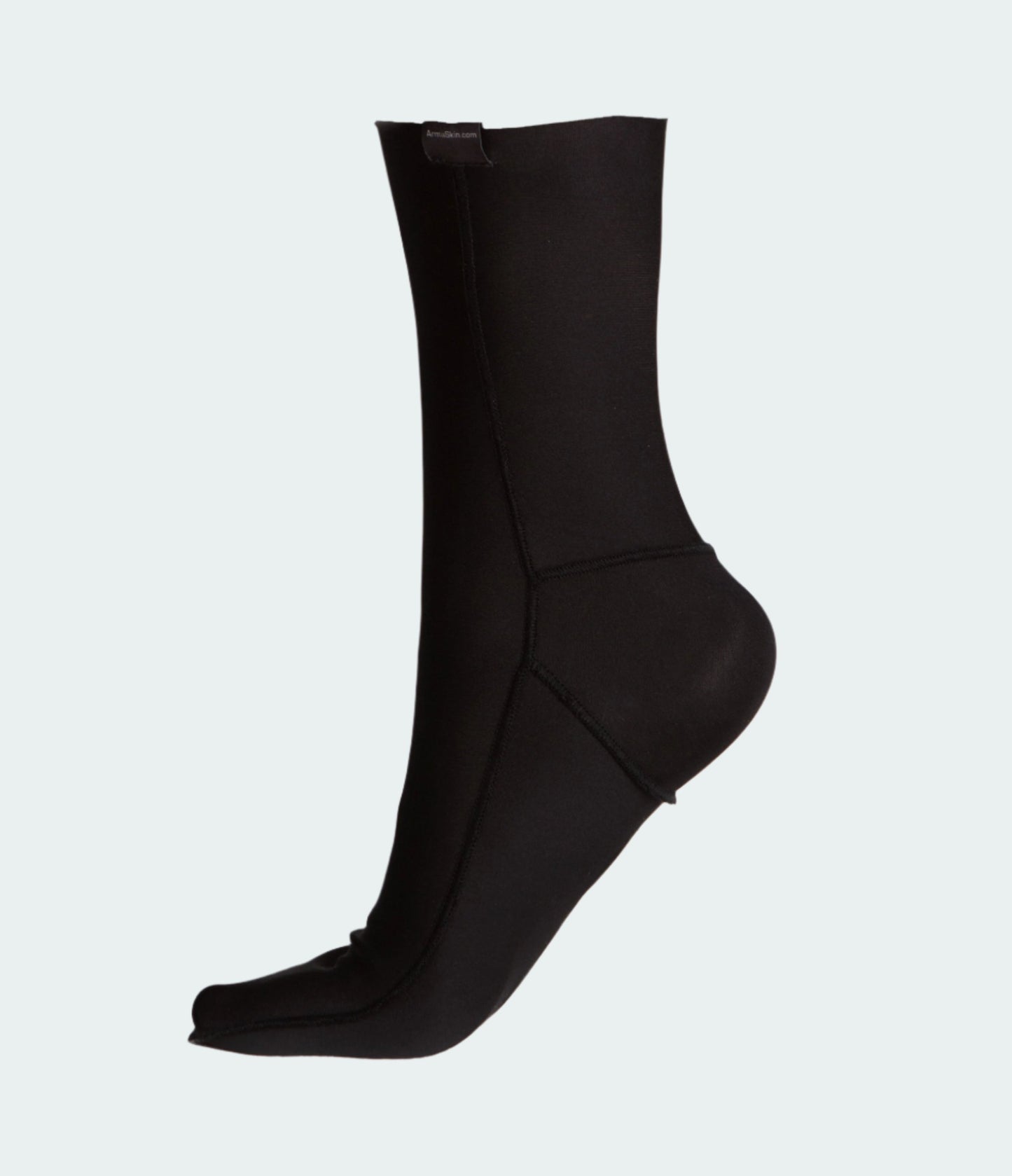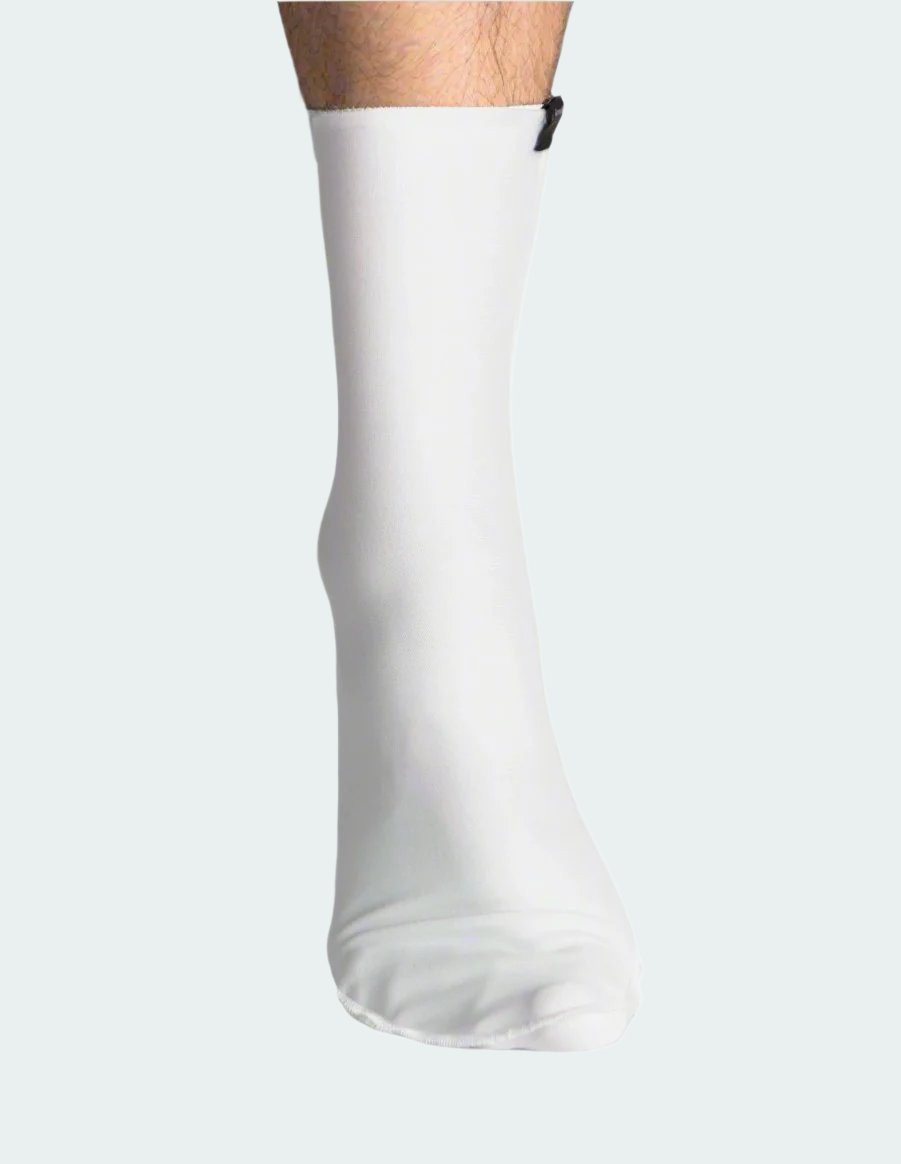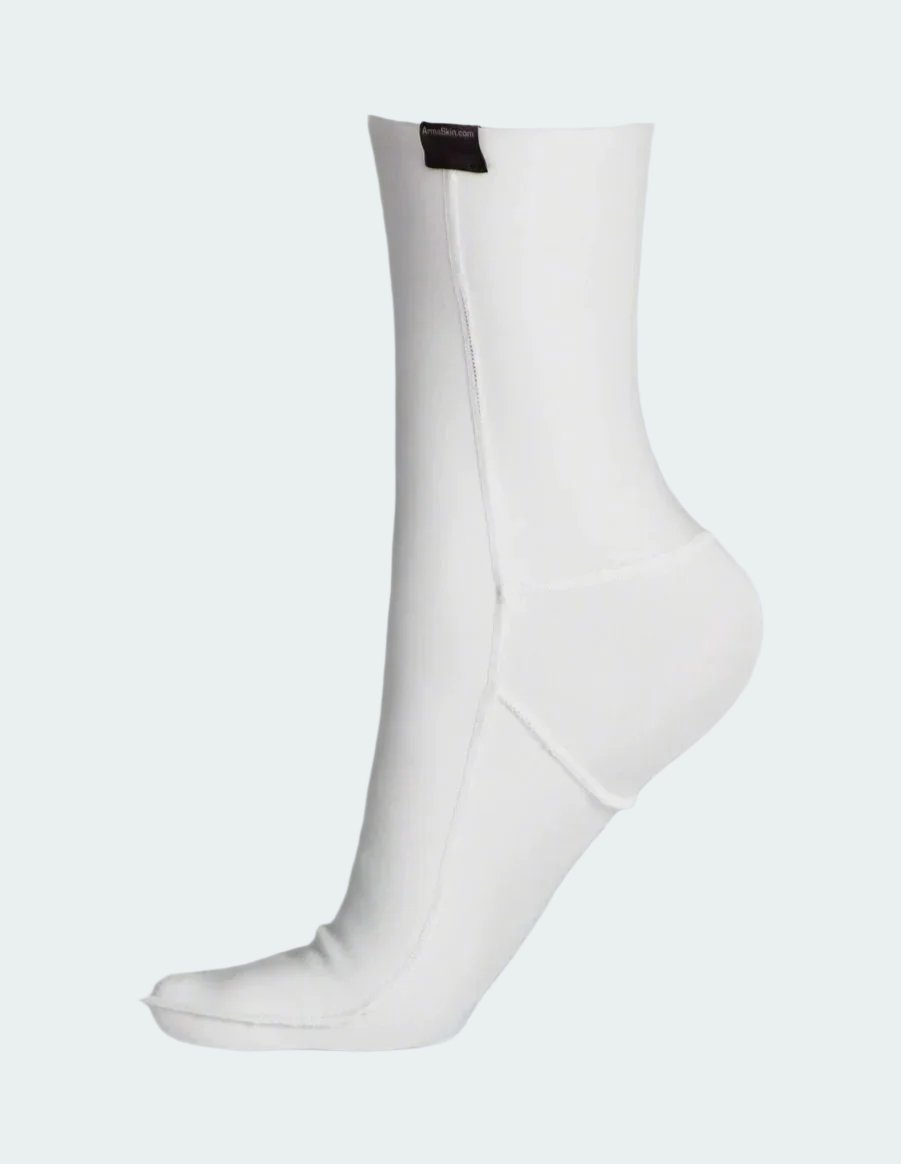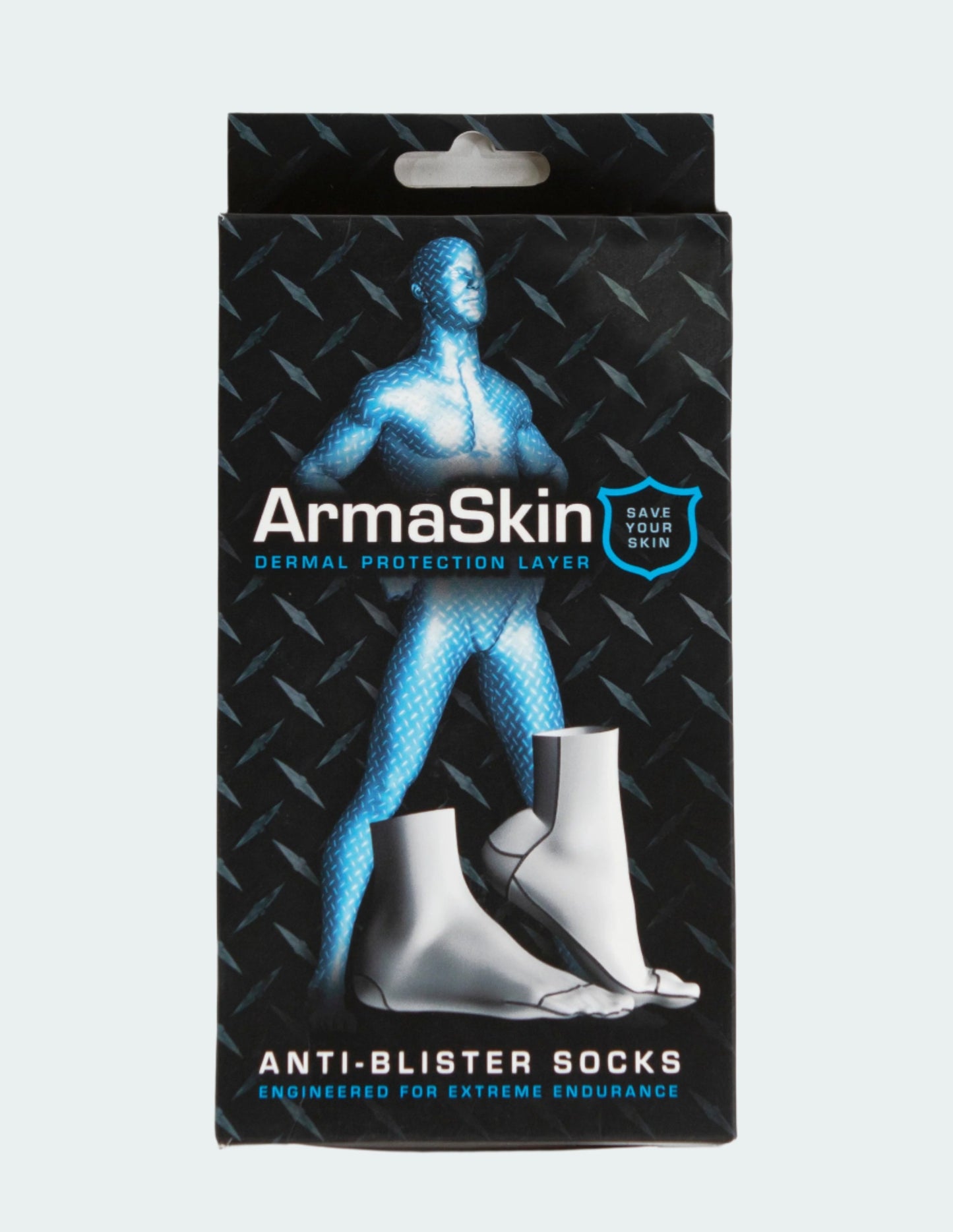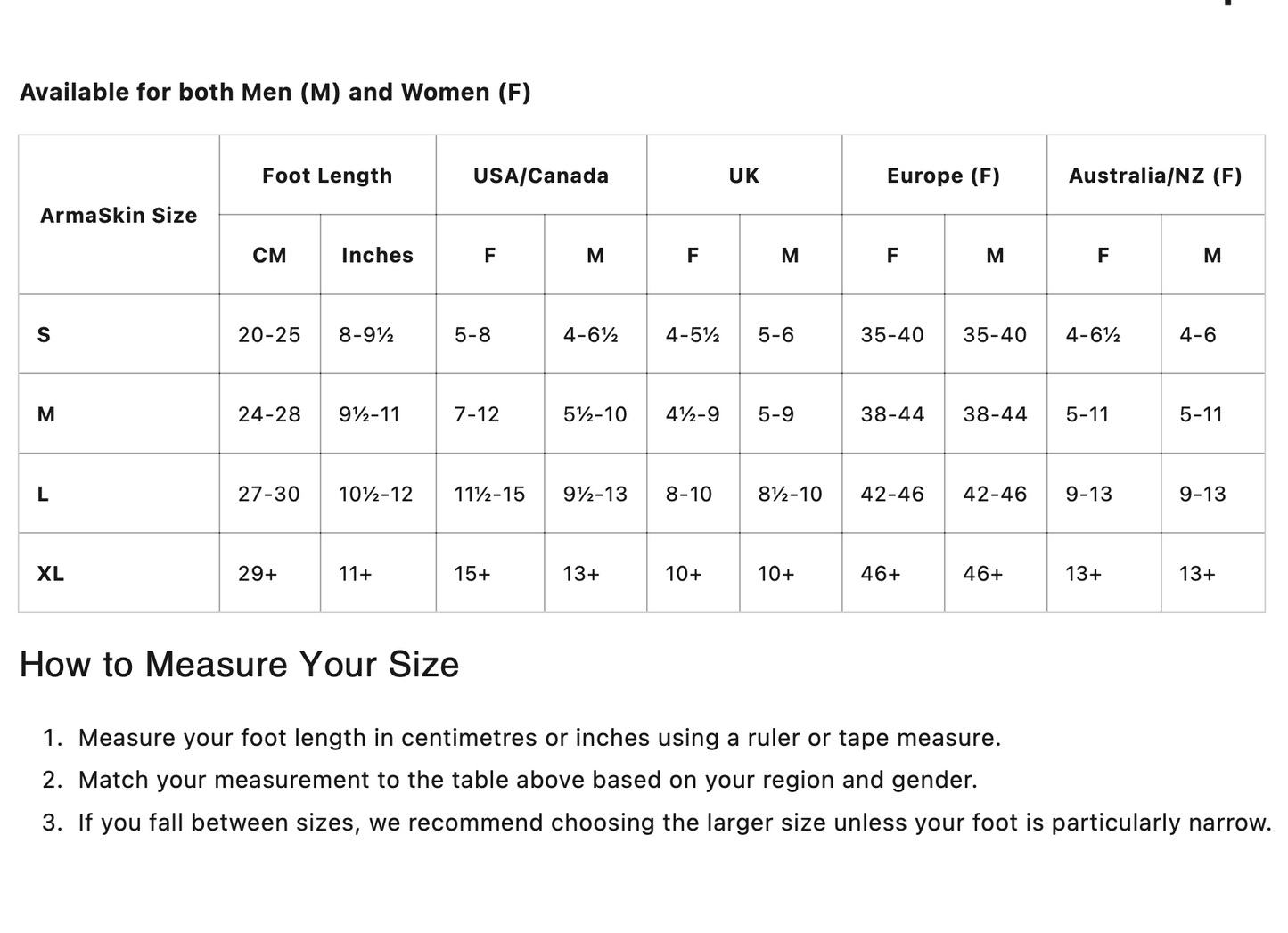There’s an ongoing debate among athletes, hikers, and military personnel alike – should a blister be kept dry, or is it better to encourage a moist healing environment? In this in-depth article, we explore the science behind blister formation, the role moisture plays in healing, and how innovative gear like ArmaSkin socks deliver advanced blister prevention. Whether you’re tackling a rugged trail, engaging in ultra-endurance events, or deployed in demanding tactical operations, understanding these principles can help you make the best choice to protect your feet.
The Anatomy of a Blister
Before we can decide whether blisters should be kept dry or moist, it’s important to understand how they form. A blister is a small pocket of fluid within the upper layers of skin, arising from friction or repetitive pressure. This fluid acts as a cushion, protecting the damaged tissue beneath. While they serve as a natural barrier against infection, blisters can become painful if not managed correctly.
How Friction and Pressure Contribute
Every step in a hiking boot or every sprint in running shoes creates friction. This friction, especially under prolonged physical activity, causes the skin layers to separate. Fluid – typically serum – fills in the gap to protect underlying tissues. In essence, a blister is the body’s response to continuous shear force. For anyone using anti-blister liners or seeking the best socks for preventing blisters, understanding this process is key to making informed decisions.
The Role of Moisture in Healing
The conventional wisdom for years has been to keep blisters dry, allowing the skin to “air out” and heal naturally. However, recent advancements in wound care suggest that a moist healing environment can actually speed up recovery. Moisture encourages cell migration and helps reduce infection risk when managed correctly. Yet, for those actively on the move, the challenge becomes: how can you balance this moisture with the need to prevent further friction and irritation?
Dry vs. Moist: The Blister Conundrum
Let’s break down the arguments for both approaches.
Keeping Blisters Dry
Supporters of the dry method argue that by keeping a blister dry, you allow it to form a natural, hard, protective layer. This undisturbed skin barrier can prevent further damage, leading to a cleaner healing process. The traditional approach has always been to cover blisters with an adhesive bandage, keeping them dry and minimizing friction from external surfaces. However, keeping a blister entirely dry during prolonged physical activity can be challenging. Moisture from sweat or inclement weather can easily compromise this method, particularly for active individuals engaged in outdoor adventures or tactical deployments.
Encouraging a Moist Healing Environment
On the flip side, modern wound care research advocates for a moist environment when dealing with blisters. A controlled amount of moisture can accelerate healing, reduce scarring, and even lower the risk of infection. This approach is commonly seen in clinical settings where hydrocolloid dressings are used to maintain optimal moisture levels. Yet, this method requires careful management. If a blister becomes overly wet for extended periods, it can soften the surrounding skin and make it more likely to break, causing pain and further complications.
For those on the move during ultra-endurance events or obstacle races, managing blister moisture is further complicated by constantly changing environments. The goal is to keep moisture levels balanced – not too dry that it cracks, yet not too moist to invite infections or additional friction.
Practical Strategies for Blister Care
In real-life scenarios, the ideal blister management solution is context-dependent. Here are some practical tips for effectively managing blisters in active conditions:
Prevention is Paramount
The best strategy is to actively prevent blister formation rather than chasing after treatment. Enter ArmaSkin socks, engineered with state-of-the-art fabric technologies that dramatically reduce friction and wick moisture efficiently. These anti-blister socks are designed to keep your feet dry in high-sweat scenarios while offering cushioning and support where it’s needed most. For hikers and runners alike, investing in blister prevention socks can save you days of discomfort after a long trek or a grueling race.
Choose the right fit: Ensure your socks aren’t too tight or too loose, as improper fit increases friction.
Opt for seamless designs: Seams can be hotspots for irritation. ArmaSkin socks eliminate these risk areas.
Utilize moisture-wicking technologies: Advanced fabrics pull sweat away from the skin, reducing blister risk.
Don’t Let Blisters Slow You Down!
Discover the ultimate solution with ArmaSkin Anti-Blister Socks. Designed with advanced friction-reducing technology, these socks keep your feet dry, comfortable, and blister-free – no matter the challenge.
Shop NowImmediate Blister Management
Once a blister has formed, whether you choose to keep it dry or mildly moist depends largely on its size and stage:
Small, Intact Blisters
If the blister is small and unbroken, it’s generally best to leave it intact. Covering it with a protective dressing or specialised blister plaster can create a micro-environment that might retain just enough moisture for optimal healing while preventing further friction.
Large or Ruptured Blisters
For larger blisters or those that have already burst, cleaning the area and applying a hydrocolloid dressing can promote moisture balance. This method retains essential moisture that helps in the healing process and reduces pain.
Being aware of your activity status and the environment you’re in is crucial. Military and tactical personnel often use advanced blister care kits in the field, combining both dry and moist methods depending on immediate needs.
Long-Term Foot Health
Regular training and extended field operations can leave your feet vulnerable to recurrent blisters and calluses. To support long-term foot health, consider incorporating regular foot care routines, including soaking, moisturizing (after wounds have healed), and using high-performance blister prevention socks during activities. Evidence suggests that individuals who rotate between different pairs of socks – including anti-blister liners during high-intensity events – experience fewer flare-ups and faster recovery times.
The Role of ArmaSkin Socks in Blister Prevention
When it comes to preventing blisters, gear makes a world of difference. ArmaSkin socks are at the forefront of blister prevention, offering cutting-edge, tactical performance for those in demanding environments. Here’s how these socks can help you manage the dry versus moist debate:
Advanced Fabric Technology
ArmaSkin socks utilise specialised materials engineered to absorb and wick moisture away from your feet. This means that even during the most strenuous conditions, your feet remain dry enough to prevent excessive friction while still maintaining the optimal moisture balance required for skin health. Whether you’re out on a long hike or sprinting between obstacles in a race, the socks’ micro-texture minimises shear forces that lead to blisters.
Seamless Design and Enhanced Support
Another standout feature of ArmaSkin socks is their seamless construction. Without irritating seams, your feet move naturally inside the socks, reducing hotspots and friction. This thoughtful design is especially beneficial for ultra-endurance athletes and tactical personnel who spend long hours on their feet. By enhancing blood circulation and reducing pressure points, these socks help to maintain skin integrity, thus minimising the risk of developing moist, overly fragile blisters.
Real-World Applications and User Testimonials
Many outdoor enthusiasts and military operatives have shared success stories after switching to ArmaSkin socks. One trail runner remarked, “During a 100-mile race, my feet stayed remarkably comfortable and blister-free thanks to these anti-blister socks. I no longer worry about whether to keep my blisters dry or moist – the socks handle both perfectly.” Such testimonials underscore the impact that premium blister prevention socks can have on your performance and overall foot health.
For those interested in real-life solutions that address the complex dynamics of blister care, exploring the ArmaSkin range opens the door to superior comfort, durability, and protection.
Understanding Your Unique Needs
Different activities place different stresses on your feet. Let’s look at some scenarios:
Hiking and Long-Distance Treks
When hiking through varied terrain, your feet are subject to constant movement, varied moisture levels from sweat, and even unexpected weather changes. In these situations, the dual approach of balancing dryness with beneficial moisture is critical. Wearing hiking socks like those from the ArmaSkin range ensures that your feet remain comfortable regardless of the trail’s challenges, ultimately reducing friction and the onset of blisters.
Running and Ultra-Endurance Events
Runners, especially those partaking in ultra-endurance events, face high levels of constant impact and sustained movement. While it might seem logical to keep the affected areas completely dry, slight moisture retained under protective dressings can accelerate healing if a blister does develop. Advanced moisture control in running socks – like those offered by ArmaSkin – prevents sweat build-up while providing the necessary cushion and support during long races.
Tactical and Military Deployments
For military personnel and tactical operators, the operational environment is unpredictable. Whether in humid jungles or arid deserts, your feet need to be resilient. Anti-blister socks that perform under extreme conditions, such as ArmaSkin socks, help maintain a balance by curbing friction and effectively managing moisture. This is crucial not only for comfort but also for operational readiness where every step counts.
Expert Advice: When to Keep Blisters Dry and When to Embrace Moisture
Experts agree that there is no one-size-fits-all answer when it comes to blister care. Instead, effective management requires recognising the stage and environment of the blister:
For new, unbroken blisters, keeping the area relatively dry helps maintain a protective barrier. Yet, if external factors force moisture – such as through sweat – skillfully managing that moisture by using moisture-wicking products and protective dressings can be beneficial.
For blisters that have already burst, fostering a slightly moist environment using hydrocolloid dressings encourages faster cell regeneration and reduces scarring.
For athletes and active professionals, prevention through high-quality blister prevention socks remains the gold standard. ArmaSkin’s anti-blister socks exemplify this approach, combining technology with thoughtful design to adapt to your day-to-day challenges.
It’s clear that knowledge is power, and understanding the science behind blister healing can empower you to make management decisions tailored to your unique activity profile.
Integrating Best Practices into Your Routine
Adopting an effective blister management routine can make the difference between conquering your next challenge and being sidelined by pain. Here are some actionable tips:
Invest in quality gear
Prevent friction from the start by choosing blister prevention socks that excel in moisture management and cushioning, such as ArmaSkin socks.
Prepare before activities
Prior to long hikes or runs, ensure your socks and footwear are properly fitted. Consider applying lubricants or anti-chafe balms on high-friction areas.
Pack essential blister care items
Always bring along blister plasters, hydrocolloid dressings, and moisture-wicking liners specially designed for tactical or ultra-endurance events.
Listen to your body
If you notice initial signs of friction or discomfort, take a short break and address the issue immediately. Early intervention is key.
By taking these steps, you’re not only enhancing your performance but also investing in long-term foot health that will keep you active and resilient through all your adventures.
The Future of Blister Prevention Technology
The intersection between innovative fabric science and modern athletic needs has led to breakthroughs in blister prevention. With ongoing research into how moisture and friction interact with skin, emerging technologies promise even more refined solutions.
Future developments in anti-blister liners, moisture-wicking materials, and seamless sock construction are on the horizon. For active individuals and professionals, staying informed and adopting the latest gear – such as the cutting-edge range of ArmaSkin socks – can set you ahead of the curve. As these technologies evolve, the age-old debate of keeping blisters dry or moist may be answered through integrated systems that offer the best of both worlds.
How to Choose the Right Blister-Prevention Socks
So, how do you select the right pair of socks for your lifestyle? Here are some criteria to consider:
Fabric Composition
Look for high-performance fibres that wick moisture and dry quickly. The blend in ArmaSkin socks is designed to keep your feet cool and dry, even in extreme conditions.
Seamless Construction
Socks with minimal or no seams greatly reduce the chance for friction and irritation, making them an ideal choice for long-term use.
Cushioning and Support
Adequate padding can help absorb shock during high-impact activities. Whether you’re on a run or performing tactical maneuvers, the right cushioning can prevent excessive friction.
Fit and Flexibility
Your socks should comfortably adapt to your foot’s shape while providing a secure fit. This feature ensures that they function optimally as preventive gear during diverse activities.
Remember, the right pair of blister prevention socks is not just about comfort – it’s about overall performance and injury prevention. For those looking for a trusted brand, ArmaSkin socks continue to be recommended by athletes and professionals across a range of disciplines.
Concluding Thoughts
The choice between keeping blisters dry or moist isn’t a binary decision. Instead, it requires an understanding of the context in which the blister develops and the activity you are undertaking. For individuals who maintain an active and demanding lifestyle – from hiking through the wilderness to competing in obstacle races – prevention is always preferable to treatment. That’s why incorporating quality anti-blister socks, like those from the ArmaSkin collection, into your gear is essential.
By embracing technology that regulates moisture, reduces friction, and conforms to your foot’s natural movement, you’re not only minimising blister risk but also maximising performance. The balanced approach of using protective dressings when needed, combined with equipment designed to prevent friction and moisture mishaps, empowers you to handle whatever challenges lie ahead.
Make the smart choice for your feet today. Explore the full range of ArmaSkin socks, engineered with advanced anti-blister technology to keep you performing at your peak. Whether you’re gearing up for a tactical mission or preparing for an intense trail run, your comfort and resilience begin with the right pair of socks.
Ready to experience the difference?
Visit the ArmaSkin website, browse our selection of anti-blister and blister prevention socks, and take the first step towards blister-free adventures. Shop now and prevent blisters before they even have a chance to slow you down!
By integrating these insights and prioritising preventive measures, you can set your path to optimal performance while caring for your feet. Remember, whether you lean towards keeping your blisters dry or favour a more balanced moist approach, the ultimate goal is to ensure your feet are protected, comfortable, and ready for every challenge that comes your way.
Embrace innovation, harness expert advice, and step forward with confidence—because when it comes to caring for your feet, every detail counts.








